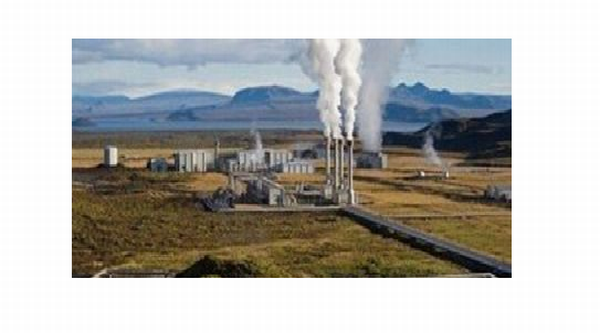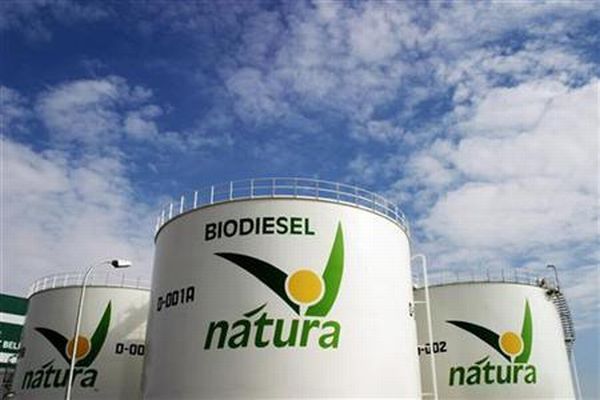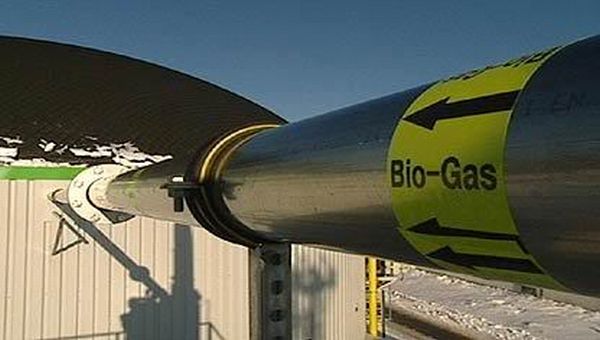
The concentration of CO2 in the atmosphere is estimated at 380 ppm and that needs to come down to 350 ppm to limit the global warming to 2 degrees Celsius. And most scientists agree is the acceptable upper limit. A higher temperature would cause the world’s ocean levels to rise and inundate coastal regions all over the world, threatening many dense human habitations. The global CO2 emissions in 2010 were 40 billion tons and continue to rise as more fossil fuel burning power plants are built. Many growing industrial activities and the rising vehicles on the road all continue to emit CO2. This growth cannot be halted as the population from the poorer parts of the world attempts to lift its standards of living.
To counter this growth in emissions, the world is turning to greater use of bio-energy which is carbon neutral. Plants grow by absorbing CO2 from the atmosphere which then gets released back into the atmosphere when bio-fuels are burnt.
In addition to this, Carbon Capture and Sequestration (CCS) projects are being taken up around the world. CCS projects capture CO2 at the point of emission such as the flue stack of a power plant and pipe them for storage in depleted oil or gas wells or in natural caverns underground or even under the ocean. The hope is that this CO2 would remain locked away for all time.
If CCS technologies could be applied to CO2 emissions from bio-energy projects, we would have a carbon negative energy cycle that could help reduce CO2 concentrations faster. The idea is attractive, but implementation still looks some distance away from reality.
As we know it
In nature, plants and trees capture CO2 from the atmosphere by photosynthesis, using sunlight and water. Bio-mass has been mankind’s oldest form of energy use. People burned firewood, dried leaves and cow-dung cakes for cooking and heating, before coal or petroleum was even discovered. Even today, in much of the poorer parts of the world in Asia and Africa, bio-mass contributes a share equal to fossil fuels in the total energy consumption. Bio-mass is attractive as a renewable energy source and except for the need for land and water, growing crops is not capital intensive.
However, the burning of bio-mass produces carbon dioxide. Even if we justify the use of bio-mass saying that it only emits the carbon that it has first captured from the atmosphere, bio-mass usage, at best, is carbon-neutral.
Need for change
While carbon neutral technology is welcome, what the world needs is a process that is carbon negative. Only then would the atmospheric CO2 concentrations start to fall. If these processes could be widely deployed simultaneous with substitution of fossil fuels, there is good chance of the atmosphere recovering to the levels needed to contain warming.
Carbon Capture and Sequestration (CCS) projects are beginning to be built around the world to capture CO2 emissions from power plants and other industrial processes. As will be seen from the example discussed below, the costs are huge and even at these costs; the project can only sequester about one-fourth the CO2 from a single power plant.
The scientists working with bio-energy are suggesting that applying CCS to bio-energy production projects would result in a double benefit. The flue emission from bio-energy projects is richer in CO2 at 40-45% than the flue gases from fossil plants which have 15% or less CO2. Therefore, the cost of CO2 capture will be lower in bio-energy plants. Additionally, the application of CCS would covert carbon neutral bio-energy into a carbon negative energy source.
What’s next?
1. Scottish Power’s capturing carbon

Scottish Power, a major power producer in the UK, has started work of capturing CO2 at its Longannnet coal fired power station and transporting it through a 246 km pipeline for storage in a depleted gas field in the North Sea. Shell and National Grid have joined this project as partners, bringing their experience with pipelines and oil and gas fields into play. The Longannet power station emits 7-8 million tons of CO2 per year, of which about 2 million tons will be sequestered by this project. The total project cost will be in excess of 1 billion pounds, despite using an existing pipeline.
The CO2 concentration in the flue gases is less than 15% which means a large volume of gases have to captured and processed to strip the CO2. The process for CO2 removal is amine absorption, an energy intensive process.
Scientists advocating bio-energy CCS, suggest that a bio-mass fermentation facility is set up around the Longannet power station. The effluent release from bio-fermentation is 40-45% CO2 which will make CO2 capture easier. The sequestration of this bio-mass related CO2, in place of the power plant CO2, will result in a carbon negative outcome.
What’s new?
The Scottish Power CCS project is the first of its kind and its plan to capture CO2 from power plant emissions could become the trend setter for all large fossil power plants around the world. Not too many power plants will, however, have an existing pipeline or a depleted gas well to use.
What difference will it make?
The sequestration of 2 million tons of CO2 a year is a big enough project to learn the process of implementing large scale CCS projects. The many abandoned oil and gas wells around the world could become potential CCS sites. The prevention of several million tons a year of CO2 emissions will be a major step towards alleviating global warming.
Problems
The huge cost is obviously the first major problem. If other power plant sites do not readily have existing pipelines to use or depleted reservoirs for storage, the costs would climb even higher.
There are also concerns about leakages from the pipelines due to corrosion or accidents and from the storage reservoir. The sequestered CO2 could be vented into the atmosphere at some time in the future, negating all the cost and effort.
2. Bio-diesel

Bio-diesel is diesel oil produced from plants, to substitute for the petroleum based fuel. It is derived from plants like Sunflower, Canola or Jatropha. In Malaysia, Palm Oil has been used for bio-diesel production.
Growing crops removes CO2 from the atmosphere. The oil produced by these plants is refined and blended with petroleum based diesel, in proportions up to 20%, and sold as bio-diesel. Bio-diesel produces 80% less CO2 than petroleum based diesel. The use of the blended fuel is, therefore, cleaner.
What’s new?
Road transport around the world continues to grow rapidly and so far there are no viable alternatives to petroleum based fuels. Electric and hybrid vehicle technology is still evolving and issues connected with batteries and driving range still need economic solutions. There is no easy way to capture CO2 from millions of moving vehicles. The only approach is to reduce emissions from motor fuel. The blended Bio-diesel reduces CO2 emission and the growing of bio-fuel crops captures CO2 from the atmosphere.
What difference will it make?
The cost of bio-diesel depends on the plant from which it is processed. If soya or rapeseed oils are used, the price works out to $ 73 – 78 per barrel, which is substantially cheaper than the current price of crude oil. If Jatropha or Palm Oil is used, it becomes even cheaper at $43 to $46 per barrel. In addition to cost saving, the bio-fuel crop, being grown in the home country, reduces risks to continuity of fuel supply as most countries of the world import petroleum products.
Problems
The major concern with bio-fuel cultivation is the risk of diversion of land and water from food production to the more remunerative fuel crops. When large tracts of land in Brazil and USA took up corn cultivation for bio-ethanol production, there were global shortages of the food crop.
3. BioGas by Germany

Germany has a large network of pipelines to transport natural gas for home heating and other industrial applications. Most of this natural gas comes from Russia through trans-continental pipelines. The government is considering legislation to require blending of bio-gas with natural gas to reduce CO2 emissions. By 2030, the plan is to have 10% bio-gas content in the natural gas, which is estimated to reduce the country’s CO2 emissions by 22 million tons. This represents a significant 2.5% reduction of Germany’s total projected CO2 emissions in that year.
This decision will also be a major boost for the bio-gas industry. Bio-gas is produced by anaerobic digestion of municipal waste or agricultural waste and from landfills. It is largely methane gas.
What’s new?
The concept of blending a percentage of bio-gas with natural gas is an important intermediate step to encouraging the growth of the bio-gas industry. The Russian gas reserves will deplete with time and the costs would escalate. The blend decision would bring new thinking into bio-gas production technologies as well as address any problems in utilization of the blended gas.
Problems
Bio-gas production happens from landfills and municipal or agricultural waste. The plants, therefore, are small in size and dispersed all over Germany. Blending this gas with natural gas will need new infrastructure to collect and pipe these gases to the natural gas pumping stations. If the end application needs a specific blend of natural and bio-gas, as for example when the gas is used as feed-stock in a process, additional means will be needed to ensure the blend. This may be unimportant for home heating or power generation.



